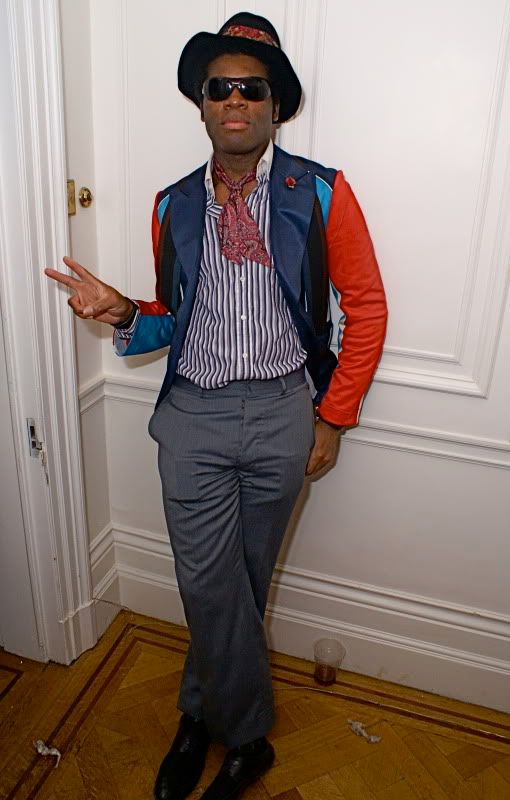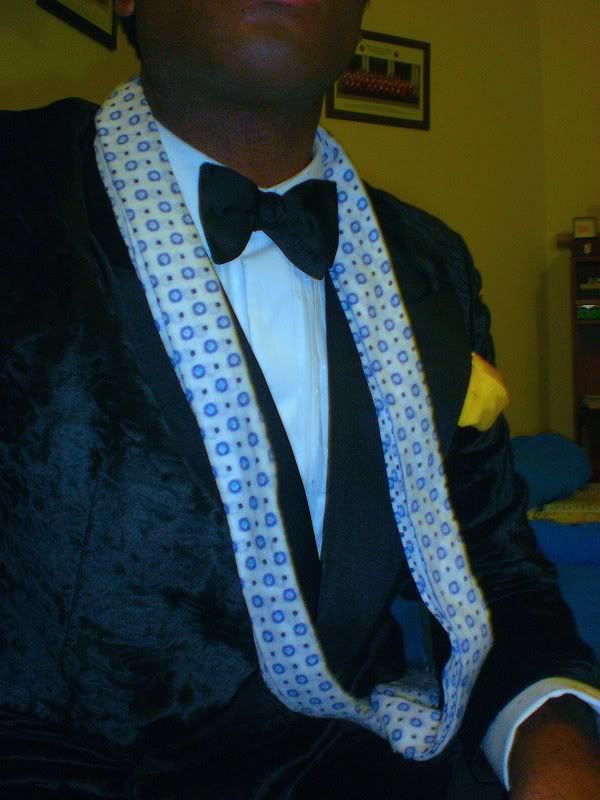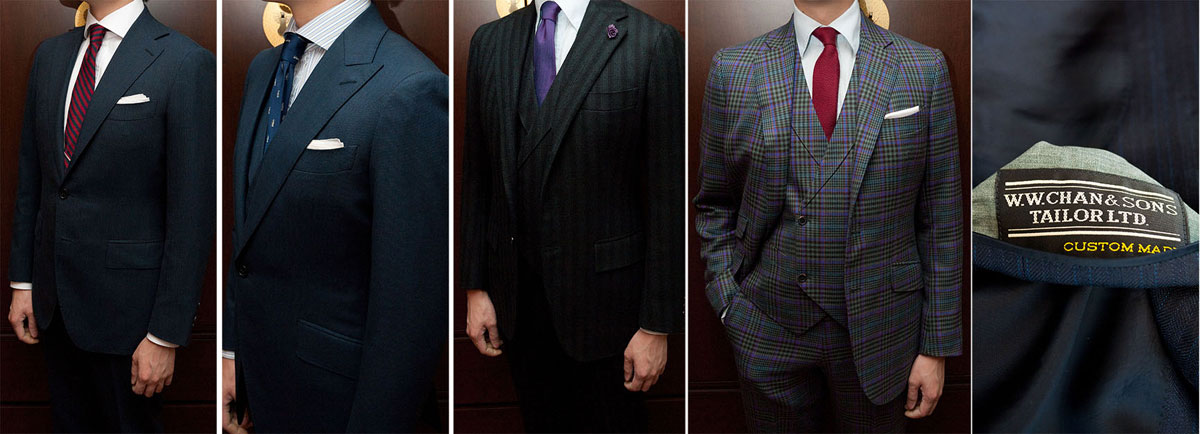On rare occasion, people e-mail me regarding the designer reviews I occasionally do and some of them like to ask why I do them at all, citing reasons such as a disconnect from my or their aesthetics, quibbles with the designs, a minor grievance with the styling, skinny models. You know, serious stuff
I know where they're coming from, but it must be said that classicism should not involve an ignorance of fashion. Everything changes -
even menswear - and it's a passion of mine to look for the good amongst all the mutables. Your father's 1980s suiting is not your own 2009 look because fashion and common sense reasoned that oversized shoulders and chests were nothing short of unbecoming and lacking in refinement and sleekness (though I readily note that most of my suits are from the 1980s and buck many of the cliches of the time with nary a care). Over this year, I've noted that older gentlemen, some of whom read this column, are appreciative of my ensembles, but frankly, those outfits would be worthy of no one's attention if I wasn't able to take inspiration from more than the history books or my father's wardrobe



Still, if there's one thing I'm unashamedly fond of, it's exhuming a particular past and bringing it back to life. So it is with Stefano Pilati's YSL Rive Gauche collection of la dernier automne et hiver, which ran with menswear designs that were seeded in the same decades that the House first came to prominence under its not forgotten founder; the 1960s and 1970s. Retro-modern is an awful, hackneyed label, but it's an easy shorthand that does partially describe these garments and the ethos behind them. Thankfully, I swallowed a dictionary once, so I'm certain more erudite vocabulary shall be forthcoming, perhaps somewhere in the final paragraph. And even if the clothes are now a year in the past, 'tis the season for old inspirations


Totally swank and utterly energetic, the collection and presentation succeeded in evoking a time that, if not necessarily better dressed, was certainly more sartorially attuned to days and nights of luxe, glamour, fantasy and awe. Capably memorialising an era in which men dressed to get away from it all; to feel like stars, Pilati's creations seemed attuned to a particularly louche but elegant and creative spirit. This feeling was instantly encapsulated by the Thin White Duke stylings of fitted jackets with sweeping lapels and the floor sweeping lengths of Oxford Bags that comprised the suiting and immediately let onlookers discern where Pilati's heart was at
One of the core values of 1960s and 70s tailoring was about accentuating of the male form, expressing this ideal through grand and form fitting cutting. Pilati modified this vision for the days of now through a classically autumnal colour palette, a lack of flaring (in reality, the wide dress trousers are cut more or less straight), an emphasis on fine, if not ultra-luxurious materials and a pinch of the psychedelia and pure glam that characterise his source material. The coupling of this restraint with a more generalised reference to two distinctive decades distinguishes the collection from the similar regenerative nostalgia produced by Tom Ford, whose boldness of colour and slim cut trousers only somewhat apply here



It's actually the use of colours that proves to be one of this collection's secret strengths. Much of the outerwear took on this aspect, being proffered in apple green, pale salmon, peach, electric blue and yellow, and all of it to a particularly natural effect. Rather than a garment that used colour to shock, what actually resulted were pieces that were very well constructed and realised and which so happened to be made in colours less rarely seen on most men's outer garments. As an extra mark of characterisation, the selection of fabrics for pieces such as motorcycle jackets tended towards the unexpected such as wool felt. The most unanticipated item of all was the hybrid of an overcoat, a cardigan and the classic opera cloak that made me curious as to how many besides myself would covet it.


The earlier citing of Tom Ford as a comparison point is key beyond the obvious connections to the House of YSL, the fondness for the 1970s and both lines having their production handled by Zegna. Superficially, one could present arguments as to why the two collections could not co-exist during the same season, but there are clear differences in vision as well as nuances. Ford's styling is quintessentially Nutter's of Savile Row, with particular attention to the shoulder and chest in a manner that is almost brash. These tics, combined with nipped waists and fuller sleeves tend to make for a more British affair that is then infused with colours and fabrics that are halfway between patrician heritage and old Hollywood. Pilati's, by contrast, is softer, a touch more relaxed and beguilingly playful. Physical examination of the jackets also revealed that they were rather lightly structured and softly tailored, in a manner that befits an Italian designer and the legacy of continental tailoring. It's no small gift to make such heavier and warmer wools handle and wear almost as lightly as summer cloths - such attention goes a long way in promoting desirable clothing



Pilati's flights of fancy are at their best when they take direction from his own "Last of the International Playboys" dandified aesthetic; seemingly, he's one of the last men on earth who upholds a somewhat Romantic ideal in his manner of dress and deportment. Favouring cropped trousers, silk scarves, loafers and rollnecks, he embodies a now rare classical style of discreet glamour, often with nods to the open shirts, slim dress trousers and high heeled boots that adorned young men in the 1960s. Therefore, his best work tends to manifest when it contains references to his own manner of mode, which in turn can anchor imaginative flights of fancy such as a blazer cut to mimic a cardigan and military cuff dress trousers:


Some time ago, I designated
a past Junya collection as my ideal summer aesthetic. It would be more than safe to say that this is mine for winter. It motivated me to purchase a rollneck and the two pairs of trousers I own from it are easily amongst the best in my rotation, well made for preening and dancing. And it reminds me that sometimes the thrill of dressing to enjoy one's nightlife is reward enough. So, that was YSL's A/W 2008 - a collection to make any lounge lizard put a little more grace and swagger in his step
Laisser les bon temps rouler


































